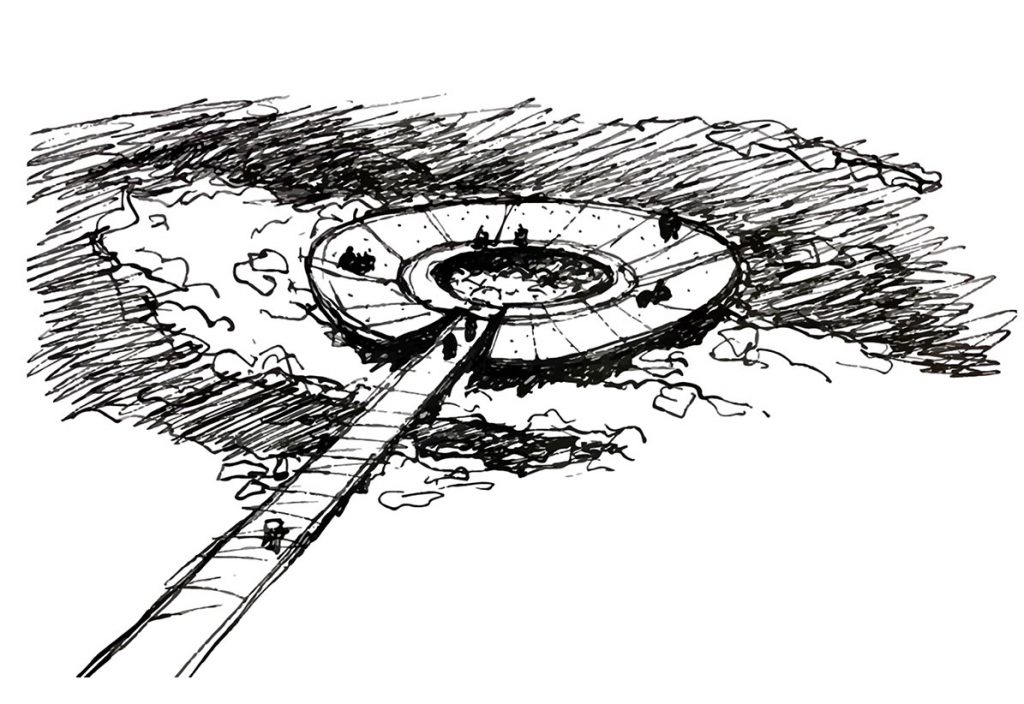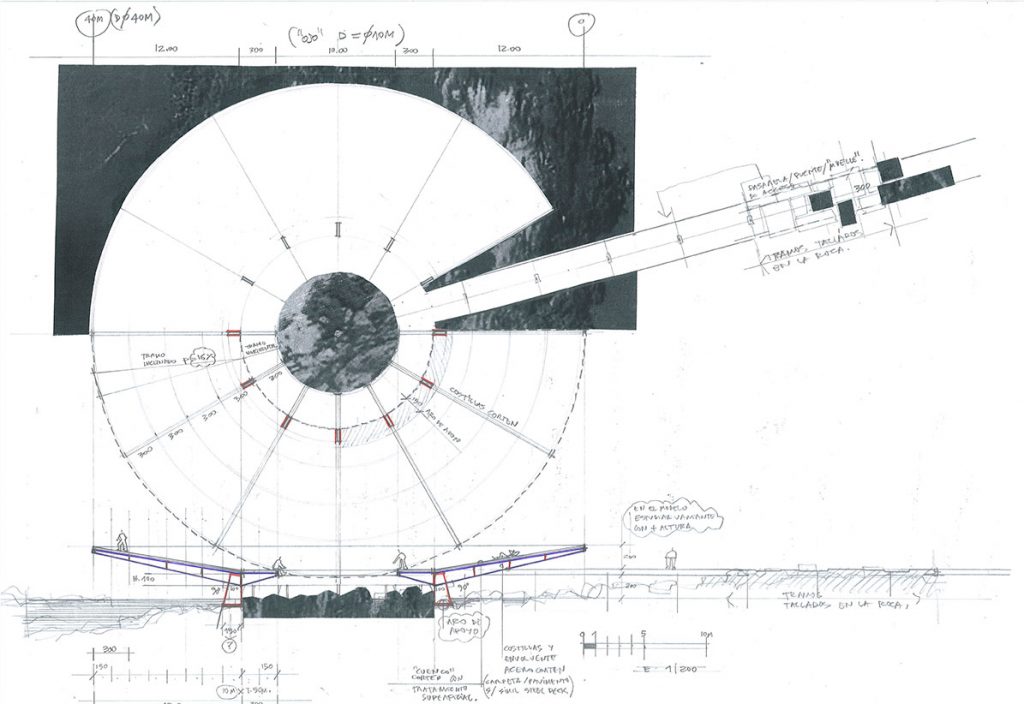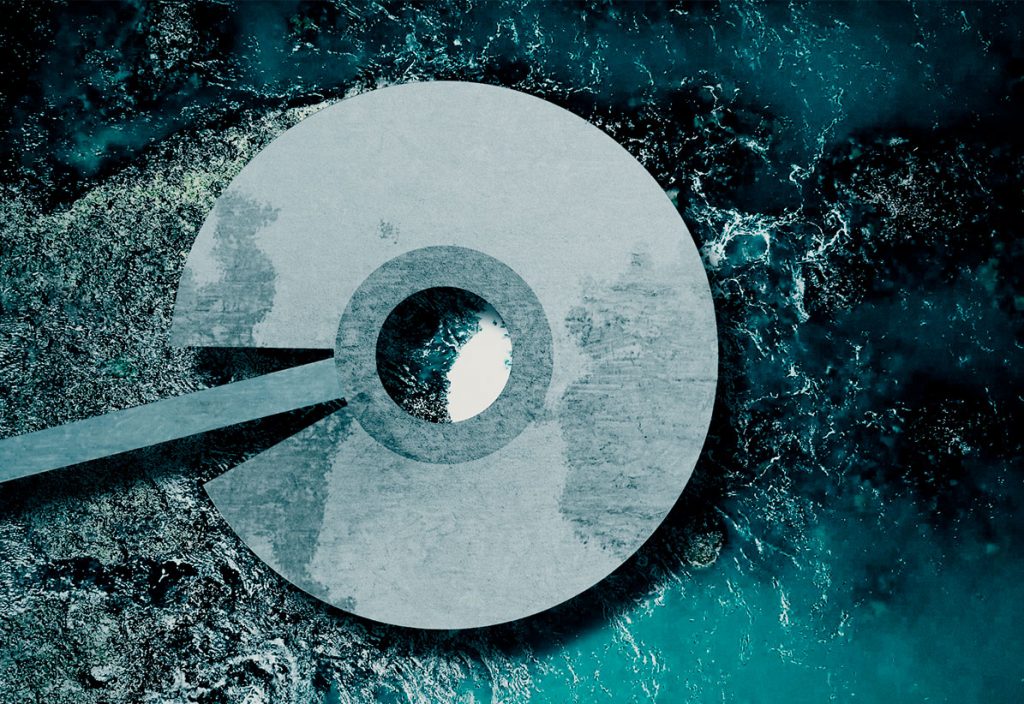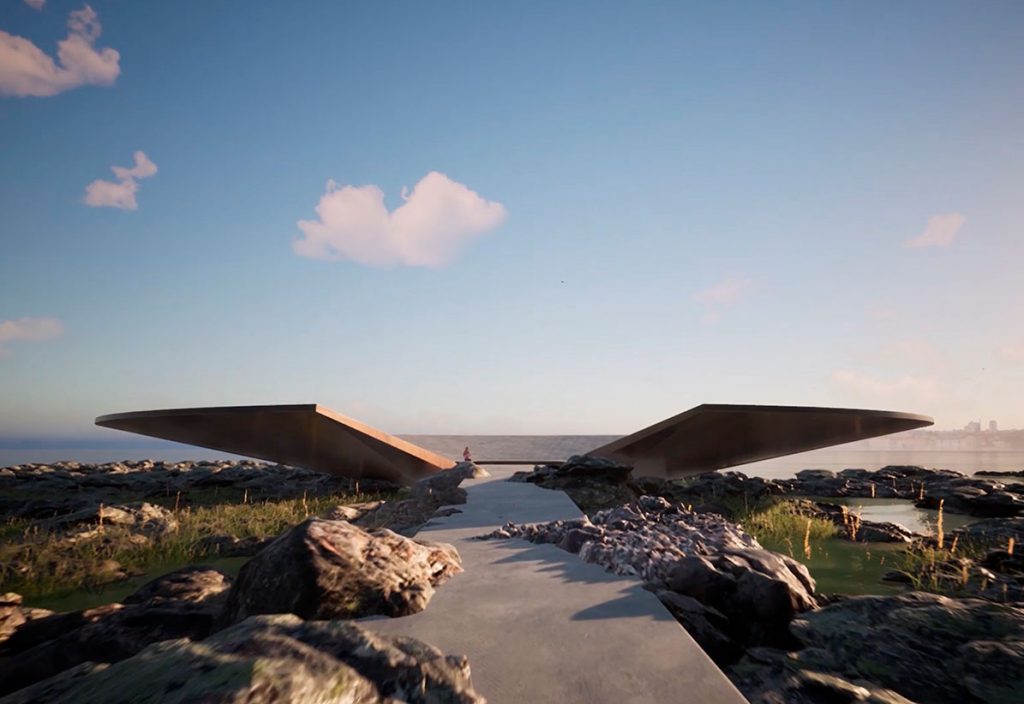World Memorial to the Pandemic
Get to know the World Memorial to the Pandemic by the firm Gómez Platero Architecture and Urbanism.
The architecture and urban planning firm Gómez Platero has presented a memorial, with a reflection-oriented design that, while arising from the experience of this pandemic, is not limited to it or the way the world is facing it. The project, entitled “World Memorial to the Pandemic”,will become the world’s first largescale memorial to honor those who have been touched by the virus. The work symbolizes respect for nature, and aims to help visitors reflect on the fragility that the pandemic introduced into our lives.

Sketch of the World Memorial to the Pandemic
Illustration: Gómez Platero Arquitectura & Urbanismo
The World Memorial to the Pandemic will be a large sculpture installed in the coast of Montevideo, Uruguay. It has a simple and forceful shape, a circle interrupted by a crevasse, which gives access to a large public space. That fissure represents something that broke, like what happened in 2020 all over the world. A long pedestrian walkway will extend from the promenade to the main platform. The platform is a 40-meter diameter space in the shape of a ring, and in the center will be a 10-meter wide hole through which nature will emerge.

World Memorial to the Pandemic plan and construction site
Illustration: Gómez Platero Arquitectura & Urbanismo
Rocks and water will be visible, allowing you to enjoy the sound of waves crashing on the rocks, the sound of flowing water and the squawking of seagulls. The project was designed to help visitors realize that the center of the ecosystem is nature and not human beings, as the purpose is to encourage them to observe the habitat in its purest state and thus reflect on the fragility of humanity.
The firm, with an international presence and important projects in Uruguay, Mexico, Ecuador, among others, wanted to make a contribution to the future, contribute its artistic vision and leave a place in which we can refuge and reflect after the impact of the virus. As Martín Gómez Platero, architect and director of the firm, describes, “architecture is a collective and historical reality, made up of small fragments that survive over time and become culture. It is a way of showing who we are on this planet. Monuments mark our culture.”

Aerial render of the World Memorial to the Pandemic
Ilustración: Gómez Platero Arquitectura & Urbanismo
The concave surface of the memorial will be made of concrete, while its underside will be covered with Corten steel, a material that requires little maintenance as it manages to preserve itself naturally over time as the terrain and water level around the work changes. The circular shape of the monument manifests the concept of unity and community, something that Gómez Platero wanted to reflect, as the pandemic has united all cultures and has made us value personal relationships and the ability to enjoy each other’s company.
As the firm Gómez Platero is very involved with respecting and protecting the environment, to minimize the impact on the natural surroundings of the monument, they will build part of the structure in their workshop and complete the construction on site. They estimate that it will take a total of six months for the project to be complete.
The space provides a refuge from urban life and its noise, as they intend for visitors to focus on feeling the nature that surrounds the space. The monument can be visited by up to 300 people simultaneously while respecting current patterns of social distancing, allowing for moments of solitude and at the same time mo- ments of shared grief and solidarity.
The monument offers visitors a sensory experience and a safe place to think about respect for nature. Martín Gómez Platero explains that by creating a monument capable of activating the senses and memories, we can generate a reflection in those who visit the memorial: as human beings, we are subordinate to nature and not the other way around.

Render that shows the runway to enter the World Memorial to the Pandemic
Illustration: Gómez Platero Arquitectura & Urbanismo








